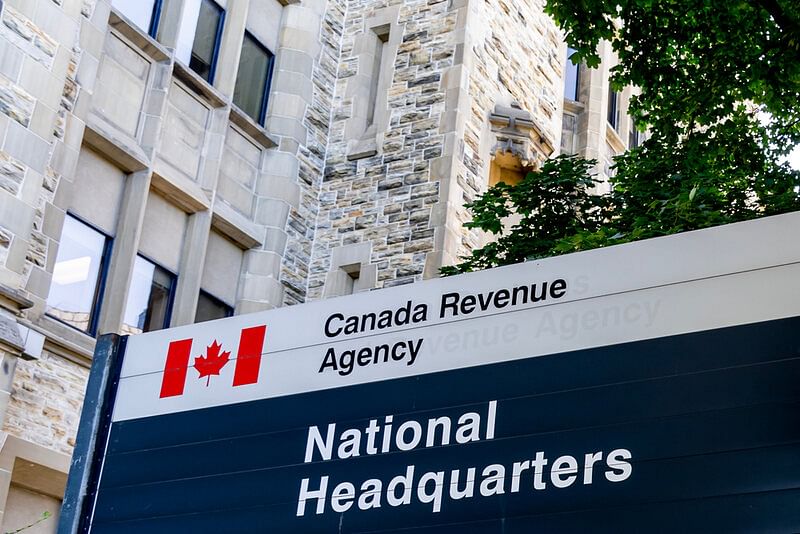
Disclaimer: Please note this article is not financial advice. The purpose of our blog is purely educational, so please consult a professional accountant or financial advisor before making any financial decision.
Filing corporate income taxes in Canada is a vital requirement, whether you're a new small business or an established entity. This comprehensive guide will help you effectively navigate this process, with a specific focus on Schedule 100 and 125.
Equip yourself with knowledge on how to enhance your financial standing and efficiently handle your tax obligations, securing your business's success within the Canadian fiscal structure.
We'll go over the following topics:
As a Canadian corporation, it is important to understand your financial statements and reporting requirements for tax purposes. The Canada Revenue Agency (CRA) requires corporations to file a corporate income tax return annually, which includes a balance sheet and an income statement.
| How to Compute Gross and Net Income |
Gross Income = Total Revenue - Cost of Goods Sold Net Income = Total Revenue - Total Expenses* *Total Expenses = Operating Expenses + Non-Operating Expenses |
The first step in computing the income is to gather all the required income statement information, including total sales, all sources of income, operating expenses, and non-operating expenses for the year. Once the detailed information has been obtained, plug them into one of the three formulas above to calculate the gross income, total business expenses, and net income.
The balance sheet computation comes next. Compared to the income statement, the main difference with the formula is that it calculates all assets and total liabilities starting from zero.
| How to Compute Assets |
Assets = Liabilities + Equity |
Using these simple formulas will allow you to obtain your company's net worth or stockholder's equity at a specific time.
Once the income statement and balance sheet information have been completed, it's time to start preparing your T2 Corporation Income Tax Return.
All the documents you need to prepare your corporate tax return are available on the Canada Revenue Agency's website. Once there, find "T2 Returns and Relevant Schedules" using the search field for a faster and more accurate result.
When you click the top result, you are redirected to the T2 Returns and Schedules page that lists all the forms you need to prepare your company's tax return and fulfill your corporation's tax obligations. These are the relevant schedules or forms you have to accomplish for the preparation of your business tax return:
Canada Schedule 100 Balance Sheet Information tax form is a vital document the Canada Revenue Agency (CRA) requires for corporations and partnerships to provide a comprehensive snapshot of their financial standing. This form highlights the corporation's assets, liabilities, equity as well as retained earnings offering crucial insights into its financial health.
The form mandates the reporting of balance sheet line items, including:
Canada Schedule 125 or the Income Statement Information tax form, is a crucial document used by individuals and businesses in Canada to report their income, operating, and non-operating expenses. This form plays a significant role in calculating the taxable income and determining the amount of tax owed.
It requires detailed information about various sources of income, such as:
Moreover, the form provides a clear breakdown of revenue and expenses, allowing taxpayers to understand their financial position and make informed decisions for future financial planning.
Canada Schedule 50 Shareholder Information tax form is a crucial document that provides detailed information about a company's shareholders to the Canadian Revenue Agency (CRA). This form contains essential data such as:
It is compulsory for corporations operating in Canada to accurately fill out this shareholder information form and submit it annually. The information gathered through Schedule 50 assists CRA in effectively monitoring and enforcing tax regulations.
This form ensures transparency in the tax system by enabling the government to verify the accuracy of reported income and holdings, preventing tax evasion, and promoting fairness among taxpayers.

Canada Schedule 8 Capital Cost Allowance (CCA) tax form is an important document used to calculate depreciation expenses for income tax purposes in Canada. This form is primarily used by businesses to determine the amount they can deduct each year as capital cost allowance on their eligible assets.
Companies make costs for acquiring and upgrading assets, but the CCA makes it easier for businesses to recover. Just note that CCA rates are different depending on the asset. By completing Schedule 8, businesses can accurately calculate their CCA deductions and reduce their taxable income, benefiting from tax savings.
To report your corporation's net income or loss for a tax assessment, you need the Canada Schedule 1 Net Income (Loss) for Income Tax Purposes tax form. This form is integral to the Canadian income tax return, officially known as the T1 General form.
It requires taxpayers to meticulously calculate their revenues, deductions, and expenses to determine their net income or loss. By filling out Schedule 1 accurately, taxpayers can ensure compliance with Canadian tax laws, facilitating a fair and efficient income tax assessment.
A Canada T2 Corporation Income Tax Return is a tax form filed by Canadian corporations to report their annual income, deductions, and tax payable to the Canada Revenue Agency. Corporations use this return to calculate the taxes owed to the government based on their net income generated during the tax year.
The T2 return includes various schedules and forms that capture detailed financial information, such as:
It is essential for corporations to accurately complete and file their T2 returns on time to ensure compliance with Canadian tax laws and avoid penalties or interest charges.
Canada Schedule 4 Corporation Loss Continuity Application is a tax form used by corporations in Canada to claim their losses and carry them forward to future tax years. This form helps businesses to offset their current or future income with the losses incurred in previous years, reducing their overall tax liability.
The form requires corporations to provide detailed information about their losses, including
By completing this form accurately, businesses can optimize the valuable tax planning strategy and ensure that their losses are effectively utilized to minimize their tax burden while maximizing their available deductions.

Once all the forms above have been filled out accurately, it is time to submit your corporate income tax return. Knowing how to file business taxes in Canada properly is very important. The CRA accepts both paper and electronic submissions of corporate income tax returns.
When filing a hard copy income tax return, attach all required schedules, supporting documents, and financial statements. If anything is missing or incomplete, it may delay processing your corporation income tax return.
It is important to note that the T2 Corporation Income Tax Return is due within six months after your company's tax year ends. If you are filing late, there will be a penalty fee of 5% per month for up to 12 months when your return is filed beyond the deadline.
If both Schedule 100 and 125 forms have been completed correctly, CRA automatically calculates Schedule 50 and Schedule 200. Once these schedules are complete, do not forget to submit them with all other required documents before the due date to fulfill your corporation's tax obligations.
Now that you know how to file corporate taxes in Canada, don't forget to consult a tax professional if you have any questions. With the right help and guidance, filing your company's tax return should be easy.
If either Form 100 or 125 has been completed incorrectly, the CRA will charge penalties up to 12 months after the due date of the T2 Corporation Income Tax Return (Schedule 200) as per tax law.
Make your corporation income tax return tax filing smooth and problem-free. Partner with tax specialists or a qualified accounting firm that can guide you through corporate tax filing.
Unloop offers income tax preparation services and tax management. Sales taxes or income taxes in Canada or the US? We got you! You do not have to worry about completing your financial statement information as we utilize the latest and most efficient software for your bookkeeping. We can generate an income statement summary and balance sheet in a few clicks.
Book a consultation call with us today!
Unloop is the first and only accounting firm exclusively servicing ecommerce and inventory businesses in the US and Canada. With the power of people and technology, our team dives deep into COGS and inventory accounting. You are paired with a dedicated bookkeeping team that prepares accurate financial statements, financial forecasts, and can also pay bills or run payroll for you. Come tax time, everything is organized and ready to go, so you don't need to worry. Book a call with an ecommerce accountant today to learn more.